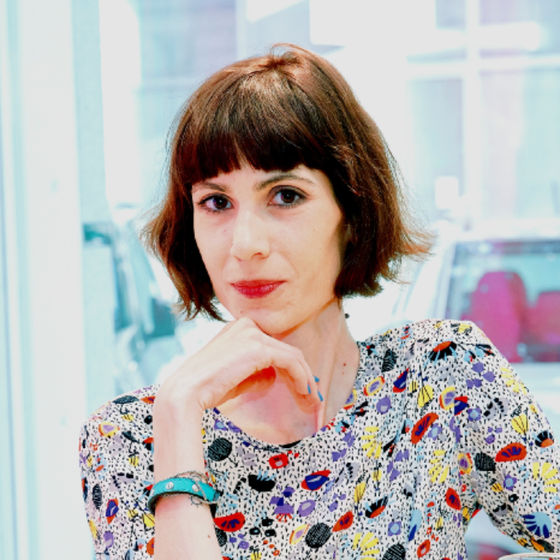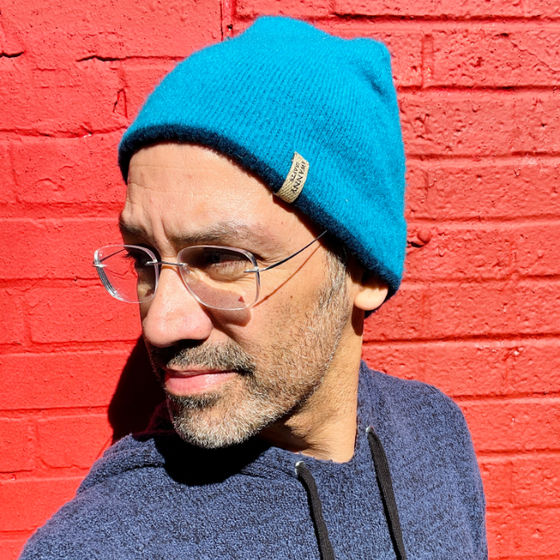Design for a Better World with Don Norman
How This Course Will Help Your Career
Don Norman, the father of user experience, puts it bluntly when he says, “the world is a mess.” So, how do we clean up this mess? Through design. Let’s learn how to design for a better world with Don Norman.
What You Will Learn
How to design for sustainability and beyond.
How to use circular design to shape the circular economy.
How to use humanity-centered design to address complex socio-technical problems.
How to use incrementalism to tackle large-scale projects.
How to use incremental modular design to overcome challenges of large, complex projects.
How we measure progress and why it is important to change the metrics.
How to incorporate meaning in the way we measure and communicate data.
Why designers must move into leadership roles.
How to overcome resistance to change and mobilize people to act towards a common goal.
How we can use new technologies such as artificial intelligence to redesign and address problems.
“Because everyone designs, we are all designers, so it is up to all of us to change the world. However, those of us who are professional designers have an even greater responsibility, for professional designers have the training and the knowledge to have a major impact on the lives of people and therefore on the earth.”
— Don Norman, Design for a Better World
Our world is full of complex socio-technical problems:
Unsustainable and wasteful practices that cause extreme climate changes such as floods and droughts.
Wars that worsen hunger and poverty.
Pandemics that disrupt entire economies and cripple healthcare.
Widespread misinformation that undermines education.
All these problems are massive and interconnected. They seem daunting, but as you'll see in this course, we can overcome them.
Design for a Better World with Don Norman is taught by cognitive psychologist and computer scientist Don Norman. Widely regarded as the father (and even the grandfather) of user experience, he is the former VP of the Advanced Technology Group at Apple and co-founder of the Nielsen Norman Group.
Don Norman has constantly advocated the role of design. His book “The Design of Everyday Things” is a masterful introduction to the importance of design in everyday objects. Over the years, his conviction in the larger role of design and designers to solve complex socio-technical problems has only increased.
This course is based on his latest book “Design for a Better World,” released in March 2023. Don Norman urges designers to think about the whole of humanity, not just individual people or small groups.
In lesson 1, you'll learn about the importance of meaningful measurements. Everything around us is artificial, and so are the metrics we use. Don Norman challenges traditional numerical metrics since they do not capture the complexity of human life and the environment. He advocates for alternative measurements alongside traditional ones to truly understand the complete picture.
In lesson 2, you'll learn about and explore multiple examples of sustainability and circular design in practice. In lesson 3, you'll dive into humanity-centered design and learn how to apply incremental modular design to large and complex socio-technical problems.
In lesson 4, you'll discover how designers can facilitate behavior-change, which is crucial to address the world's most significant issues. Finally, in the last lesson, you'll learn how designers can contribute to designing a better world on a practical level and the role of artificial intelligence in the future of design.
Throughout the course, you'll get practical tips to apply in real-life projects. In the "Build Your Case Study" project, you'll step into the field and seek examples of organizations and people who already practice the philosophy and methods you’ll learn in this course.
You'll get step-by-step guidelines to help you identify which organizations and projects genuinely change the world and which are superficial. Most importantly, you'll understand what gaps currently exist and will be able to recommend better ways to implement projects. You will build on your case study in each lesson, so once you have completed the course, you will have an in-depth piece for your portfolio.
Gain an Industry-Recognized UX Course Certificate
Use your industry-recognized Course Certificate on your resume, CV, LinkedIn profile or your website.

Our courses and Course Certificates are trusted by these industry leaders:

Is This Course Right for You?
This course addresses a broad spectrum of professionals and is a practical handbook for anyone seeking systemic change.
In particular, this course will benefit:
Designers looking to apply their skills outside traditional roles.
Entrepreneurs looking to capitalize on the economic opportunities in sustainable and circular design.
Professionals in government and non-government agencies looking to improve the results of their work in various sectors such as education, healthcare and climate policy.
Anyone interested in working on large socio-technical problems and looking to design a better world.
Learn and Work with a Global Team of Designers
You’ll join a global community and work together to improve your skills and career opportunities. Connect with helpful peers and make friends with like-minded individuals as you push deeper into the exciting and booming design industry.
Course Overview: What You'll Master
- Each week, one lesson becomes available.
- There's no time limit to finish a course. Lessons have no deadlines.
- Estimated learning time: 13 hours 6 mins spread over 8 weeks .
Lesson 0: Welcome and Introduction
-
0.1: Welcome to Design for a Better World (17 mins)
-
0.2: Build Your Portfolio: Case Study Overview (7 mins)
-
0.3: Let Our Community Help You (1 min)
-
0.4: How to Earn Your Course Certificate (16 mins)
-
0.5: Expand Your Network and Grow Your Skills in Our Online Forums (5 mins)
-
0.6: Global Skills, Local Jobs: Build Your Network in Your Area (1 min)
-
0.7: Gain Timeless Knowledge Through Courses From the Interaction Design Foundation (21 mins)
-
0.8: Mandatory vs. Optional Lesson Items (7 mins)
-
0.9: A Mix Between Video-Based and Text-Based Lesson Content (6 mins)
Lesson 1: The World Is Artificial and the Way We Measure It Is Wrong
-
1.1: Welcome and Introduction (3 mins)
-
1.2: What Can Designers Do to Make the World Better? (10 mins)
-
1.3: Anything Artificial We Can Design Better (14 mins)
-
1.4: Use More Meaningful Measurements in Design and in the World (54 mins)
-
1.5: Conversations: Use Stories to Complement Data (14 mins)
-
1.6: Build Your Portfolio: Identify Changemakers around You (8 mins)
-
1.7: Congratulations and Recap (6 mins)
Lesson 2: How to Design For Sustainability and the Circular Economy
-
2.1: Welcome and Introduction (3 mins)
-
2.2: Recycling is Not Enough. Let's Design for Reuse (18 mins)
-
2.3: Sustainability Is Not Enough (23 mins)
-
2.4: Design Products That Are Sustainable, Robust and Resilient (26 mins)
-
2.5: Use Circular Design To Reverse Harm (30 mins)
-
2.6: How Designers Can Help Companies Design for the Circular Economy (59 mins)
-
2.7: Conversations: Which Is Better—Paper, Plastic or Cloth? (12 mins)
-
2.8: Build Your Portfolio: Analyze Sustainability and Circular Practices (7 mins)
-
2.9: Congratulations and Recap (11 mins)
Lesson 3: How to Apply Humanity-Centered Design to Solve Global Challenges
-
3.1: Welcome and Introduction (13 mins)
-
3.2: Why Should We Practice Humanity-Centered Design? (22 mins)
-
3.3: The Five Principles of Humanity-Centered Design (51 mins)
-
3.4: How to Use Incrementalism in Humanity-Centered Design for Complex Projects (21 mins)
-
3.5: How to Apply Incremental Modular Design to Global Challenges (23 mins)
-
3.6: Incremental Design in Practice (15 mins)
-
3.7: Why Should Designers Become Leaders? (30 mins)
-
3.8: Conversations: What Education Does a Designer Need? (7 mins)
-
3.9: Build Your Portfolio: Does Your Changemaker Use Humanity-Centered Design? (8 mins)
-
3.10: Congratulations and Recap (7 mins)
Lesson 4: How Designers can Drive Positive Behaviors
-
4.1: Welcome and Introduction (2 mins)
-
4.2: How to Tackle Human Resistance to Change (18 mins)
-
4.3: Why Do We Not Act on Climate Change? (20 mins)
-
4.4: Human Behavior Is the Problem and the Solution (46 mins)
-
4.5: Beyond Climate Change: Where Can Designers Make An Impact? (15 mins)
-
4.6: Conversations: Beyond Climate Change (6 mins)
-
4.7: Build Your Portfolio: Evaluate the Impact of the Changemakers (8 mins)
-
4.8: Congratulations and Recap (6 mins)
Lesson 5: How Can Designers Build a Brighter Future
-
5.1: Welcome and Introduction (2 mins)
-
5.2: Designers as Conductors of Change: Bring Experts Together to Solve Complex Problems (17 mins)
-
5.3: What Are The First Steps to Design a Better Future? (44 mins)
-
5.4: How Can Designers Adapt to New Technologies? The Future of Technology in Design (22 mins)
-
5.5: Conversations: AI Technologies as Collaborators! (7 mins)
-
5.6: Build Your Portfolio: Trim, Tune and Submit! (13 mins)
-
5.7: Congratulations and Recap (7 mins)
Lesson 6: Course Certificate, Final Networking, and Course Wrap-up
How Others Have Benefited

Nena Gačić, Croatia
“The instructor excels at effectively communicating complex ideas in a clear and concise manner, making it easy for students to understand and grasp the material.”

Alexandre de Oliveira Lot, Brazil
“The videos were amazing and concise, and the text was direct and very well written! The readings available to download and some templates were really helpfull too. Don is an amazing figure and an awesome teacher.”

Renato Castilho, United States
“It's Don Norman, just brilliant. Considering the complexity of the subject at hand, which, albeit familiar to the more experienced, always evolves quicker than one keeps up, was well compartmentalized.”
How It Works
-
Take online courses by industry experts
Lessons are self-paced so you'll never be late for class or miss a deadline.
-
Get a Course Certificate
Your answers are graded by experts, not machines. Get an industry-recognized Course Certificate to prove your skills.
-
Advance your career
Use your new skills in your existing job or to get a new job in UX design. Get help from our community.
Start Advancing Your Career Now
Join us to take “Design for a Better World with Don Norman”. Take other courses at no additional cost. Make a concrete step forward in your career path today.
Advance my career now